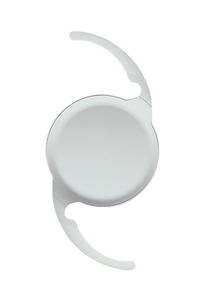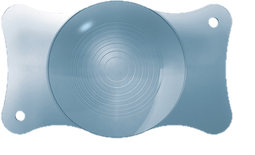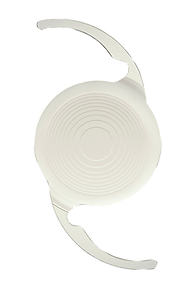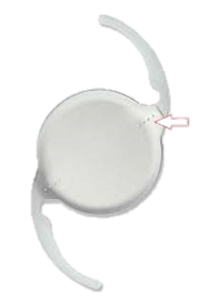Lens Technology

Once the ineffective lens (for presbyopia correction) or cloudy lens (for cataract) is removed, it is replaced with an artificial lens. Artificial lenses are usually made of acrylic or silicone and have a central portion called the optic and stabilizers to hold it in place (called haptics). Designs vary but all have the same core principals.
Many factors are taken into consideration when choosing which lens will offer the best results. These include anatomical structures of the eye, detailed measurements and lifestyle and vision requirements.
Just as you cannot feel the natural lens in your eye, you will not be able to feel the replacement lens either.
Monofocal Lenses
Monofocal lenses have been used in cataract surgery for more than 60 years. Over 20 years ago, foldable versions were introduced and this led to the development of small incision cataract surgery.
These lenses replace the cataractous lens within the eye and offer a good outcome for patients who wish to see distance objects without spectacles but who are happy to wear their glasses for reading. These lenses are routinely used in the NHS.
At LaserSight Essex, surgeons use monofocal lenses by Bausch & Lomb, Abbott Medical Optics and Alcon.

MultiFocal Lenses
Multifocal lens implants are foldable and replace the cataractous lens within the eye and have the added advantage of good all round vision, rather than single distance vision, minimising the need for spectacles.
These lenses are available as bifocals, trifocals and with extended depth of field.
At LaserSight Essex, surgeons use the Eyhance and EDOF lenses by Abbott Medical Optics and Lisa Trifocals by Zeiss.


Lenses for astigmatic correction
These lenses have been used in the UK for almost 20 years. Recent technological advances combined with improved diagnostic equipment and surgical techniques mean that surgeons are able to correct astigmatism as well as offer patients good all-round vision following both cataract surgery and lens replacement surgery for presbyopia (PreLex). There are a variety of lens implants, each with unique characteristics. They are available as monofocal or multifocal lenses and are marked to ensure accurate positioning to enable astigmatic correction.

